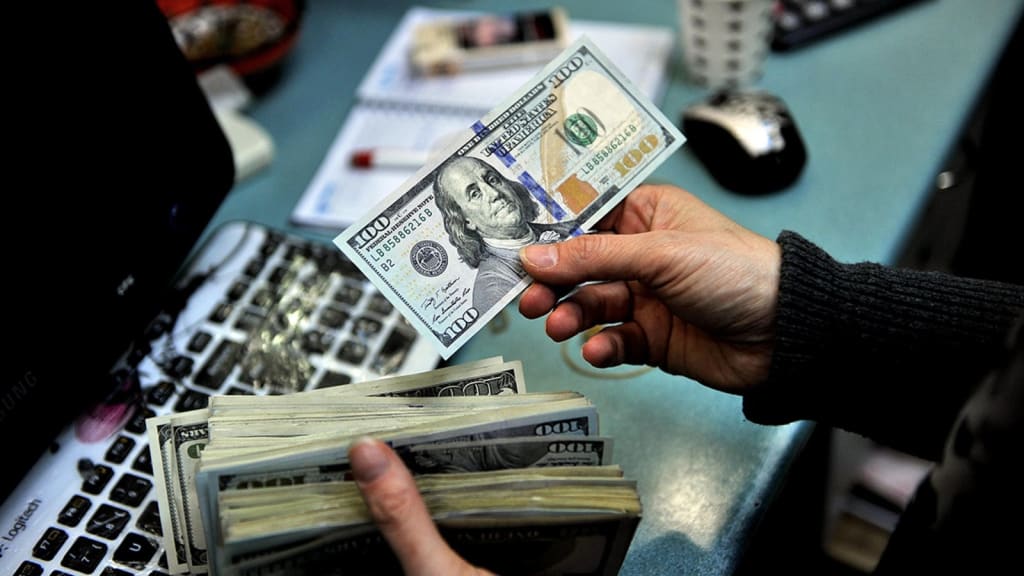Introduction
Cash, the tangible currency we hold in our hands, has been a cornerstone of economic systems for centuries. From ancient coins to modern paper notes and digital transactions, the concept of cash has evolved dramatically, shaping societies, economies, and individual lives. Despite the rise of digital payments, cash remains a vital medium of exchange in many parts of the world. This article explores the history, significance, challenges, and future of cash in a rapidly changing financial landscape, delving into its economic, cultural, and technological implications.
The Historical Evolution of Cash
Early Forms of Money
The concept of cash predates modern coins and paper money. In ancient civilizations, barter systems dominated, where goods like grain, livestock, or shells were exchanged directly. However, bartering was inefficient due to the lack of a standardized value system. Around 3000 BCE, Mesopotamia introduced early forms of money, such as weighed silver and barley, to facilitate trade.
By 700 BCE, the Lydians in modern-day Turkey minted the first coins from electrum, a natural alloy of gold and silver. These coins, stamped with official insignia, provided a standardized and portable medium of exchange, revolutionizing trade. The innovation spread to ancient Greece, China, and India, with each civilization developing its own coinage systems.
The Rise of Paper Money
Paper money emerged in China during the Tang Dynasty (618–907 CE) as merchants issued promissory notes to avoid carrying heavy coins. By the Song Dynasty (960–1279 CE), the Chinese government formalized paper currency, backed by gold or silver reserves. This concept reached Europe in the 17th century, with Sweden issuing the first European paper money in 1661.
The adoption of paper currency was driven by convenience and the need for larger transactions. However, it also introduced challenges like counterfeiting and inflation, as governments sometimes printed money without sufficient reserves, leading to economic instability.
The Gold Standard and Fiat Money
In the 19th century, many countries adopted the gold standard, tying paper currency to a fixed amount of gold. This system provided stability but limited monetary flexibility. By the 20th century, the gold standard was largely abandoned, giving rise to fiat money—currency backed by government trust rather than physical commodities.
Fiat money allowed governments to control monetary policy more effectively, but it also raised concerns about inflation and currency devaluation. Today, most global currencies, including the U.S. dollar and the euro, are fiat-based, relying on public confidence in the issuing authority.

The Role of Cash in Modern Economies
Cash as a Medium of Exchange
Cash remains a universal medium of exchange, accepted in most transactions worldwide. Its tangibility makes it intuitive and reliable, especially in regions with limited access to digital payment systems. Small businesses, informal markets, and rural economies often depend on cash for daily transactions.
In developing countries, cash is critical for financial inclusion. According to the World Bank, 1.4 billion people globally remain unbanked, lacking access to bank accounts or digital payment platforms. For these individuals, cash is the primary means of participating in the economy.
Cash and Economic Stability
Cash plays a stabilizing role in economies. During financial crises, such as the 2008 global recession, people often turn to cash as a safe store of value. Central banks use cash circulation to implement monetary policies, adjusting interest rates and money supply to control inflation and stimulate growth.
However, cash also has drawbacks. Large cash transactions can facilitate illegal activities, such as tax evasion and money laundering. Governments and financial institutions have introduced measures like transaction limits and reporting requirements to mitigate these risks.
Cultural Significance of Cash
Beyond its economic role, cash carries cultural weight. In many societies, physical money is a symbol of wealth, status, or tradition. For example, in East Asian cultures, giving cash in red envelopes during holidays like Lunar New Year signifies good fortune. Similarly, tipping with cash is a common practice in the service industry, reflecting gratitude and social norms.
Cash also holds psychological value. Studies, such as those by the University of Michigan, show that people feel a stronger emotional connection to physical money than digital transactions, influencing spending behavior. The tactile experience of handling cash can make individuals more cautious about spending compared to swiping a card.
The Challenges Facing Cash
The Rise of Digital Payments
The advent of digital payment systems—credit cards, mobile apps, and cryptocurrencies—has challenged the dominance of cash. Companies like PayPal, Venmo, and Alipay have made cashless transactions seamless, especially in urban areas. In 2023, a Federal Reserve study found that 41% of U.S. transactions were cashless, up from 29% in 2016.
In countries like Sweden and China, cash usage has plummeted. Sweden, for instance, is projected to become nearly cashless by 2030, with only 1% of GDP in physical currency circulation. Mobile payment platforms like WeChat Pay and AliPay dominate in China, where even street vendors accept QR code payments.
Financial Exclusion and Inequality
While digital payments offer convenience, they exacerbate financial exclusion for those without access to technology. Rural communities, the elderly, and low-income individuals often rely on cash due to limited internet access or distrust of digital systems. A 2022 World Bank report highlighted that 65% of adults in low-income countries lack access to digital financial services, underscoring the ongoing need for cash.
Environmental and Operational Costs
Producing and maintaining cash is resource-intensive. Printing paper money and minting coins require materials, energy, and labor. The U.S. Mint, for example, produces billions of coins annually, with each penny costing more to make (2.1 cents in 2023) than its face value. Additionally, cash handling—transportation, storage, and security—incurs significant costs for banks and businesses.
Environmental concerns also arise. Paper currency often uses cotton or linen, contributing to deforestation and water usage. While some countries, like Canada and Australia, use polymer notes to reduce environmental impact, the lifecycle of cash remains a concern.

The Future of Cash
Cash in a Digital World
As digital payments gain traction, the role of cash is evolving. Some predict a fully cashless society, but others argue that cash will persist due to its unique advantages. For instance, cash is anonymous, requiring no personal information or technology, making it appealing for privacy-conscious individuals.
Central banks are exploring digital alternatives, such as Central Bank Digital Currencies (CBDCs). CBDCs combine the benefits of cash (government backing, universal acceptance) with digital convenience. China’s digital yuan, launched in 2020, is a leading example, with over 260 million users by 2023. The European Central Bank and the Federal Reserve are also researching CBDCs, though widespread adoption is years away.
Cash and Financial Inclusion
To address financial exclusion, governments and organizations are implementing hybrid solutions. For example, mobile money platforms like M-Pesa in Kenya allow cash-based users to deposit and withdraw money via local agents, bridging the gap between cash and digital systems. Such innovations ensure that cash remains relevant while integrating underserved populations into the financial ecosystem.
Technological Innovations in Cash
Technological advancements are reshaping physical currency. Polymer notes, embedded with security features like holograms and microtext, are harder to counterfeit and more durable than paper. Some countries are experimenting with smart cash, embedding RFID chips in notes to track circulation and combat fraud.
Blockchain technology, the backbone of cryptocurrencies, could also influence cash. While cryptocurrencies like Bitcoin are not cash, they highlight the potential for decentralized, secure transaction systems. Hybrid models, combining cash’s tangibility with blockchain’s security, may emerge in the future.
The Global Perspective on Cash
Cash Usage by Region
Cash usage varies widely across regions. In developed economies like Japan and Germany, cash remains popular due to cultural preferences and robust banking systems. Japan, despite its technological advancements, relies on cash for 53% of transactions, according to a 2023 Bank of Japan report.
In contrast, Scandinavian countries and parts of Asia are rapidly moving toward cashless systems. India, after its 2016 demonetization initiative, saw a surge in digital payments, though cash still accounts for 70% of transaction volume in rural areas, per a 2023 Reserve Bank of India study.
Policy and Regulation
Governments play a critical role in shaping the future of cash. Policies like demonetization, as seen in India, aim to curb black money but can disrupt economies reliant on cash. Conversely, ensuring access to cash is a priority in some regions. The European Union, for instance, passed legislation in 2024 mandating that retailers accept cash to protect consumer choice.
Central banks also influence cash’s future through monetary policy. Negative interest rates, implemented in countries like Japan and the Eurozone, discourage cash hoarding, while high inflation, as seen globally in 2022–2023, erodes cash’s purchasing power.
Conclusion
Cash has been a pillar of human civilization, evolving from simple coins to a complex system intertwined with culture, economics, and technology. While digital payments are transforming how we transact, cash retains unique advantages—universality, anonymity, and accessibility—that ensure its relevance. As the world navigates the balance between cash and digital alternatives, innovations like CBDCs and smart currency may redefine money’s future.
The story of cash is far from over. It remains a symbol of trust, a tool for inclusion, and a bridge between tradition and modernity. As we move toward an increasingly digital world, the challenge lies in preserving cash’s benefits while embracing the opportunities of technological progress. Whether in the form of crisp notes or digital tokens, money will continue to shape the way we live, trade, and connect.